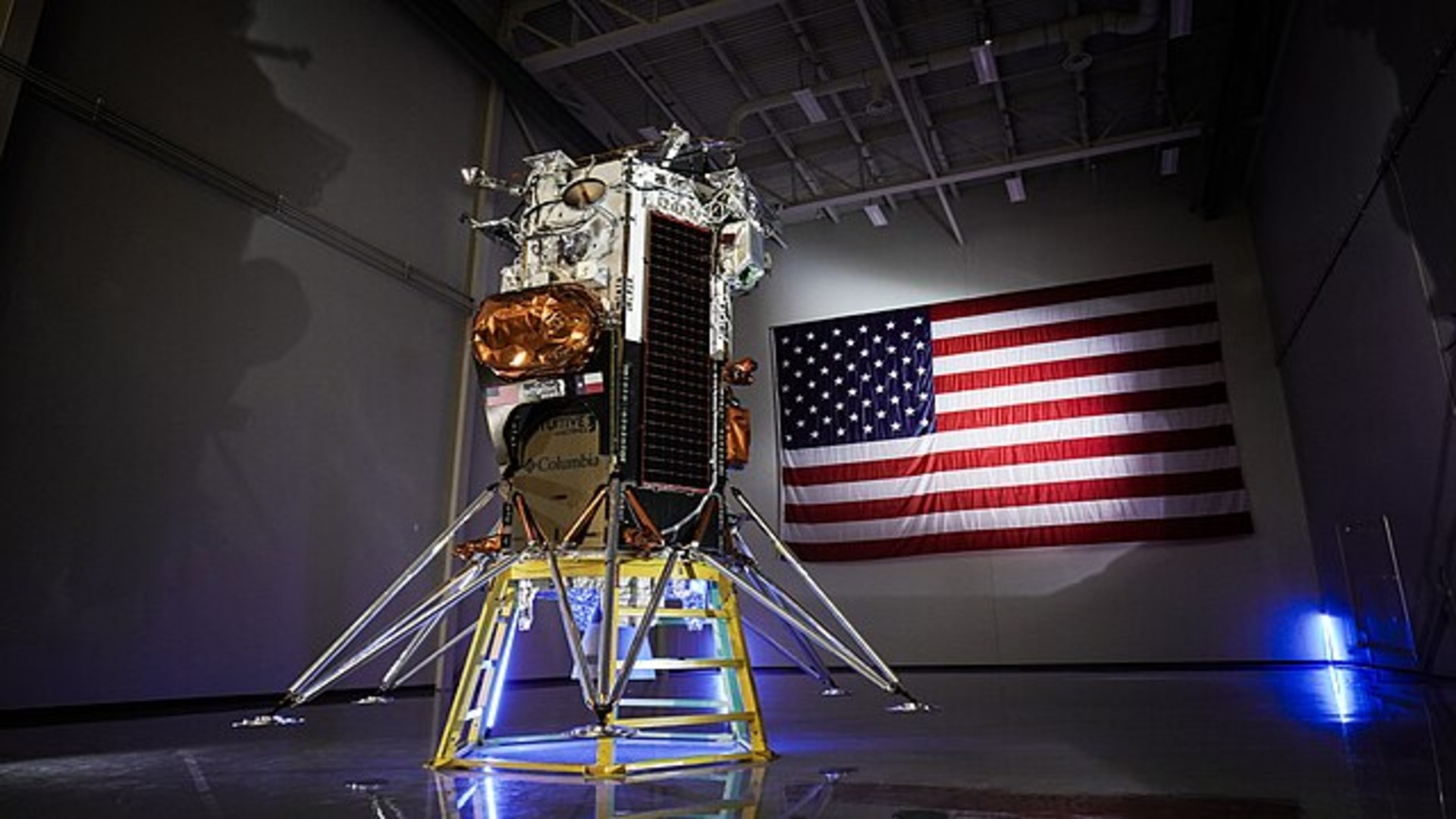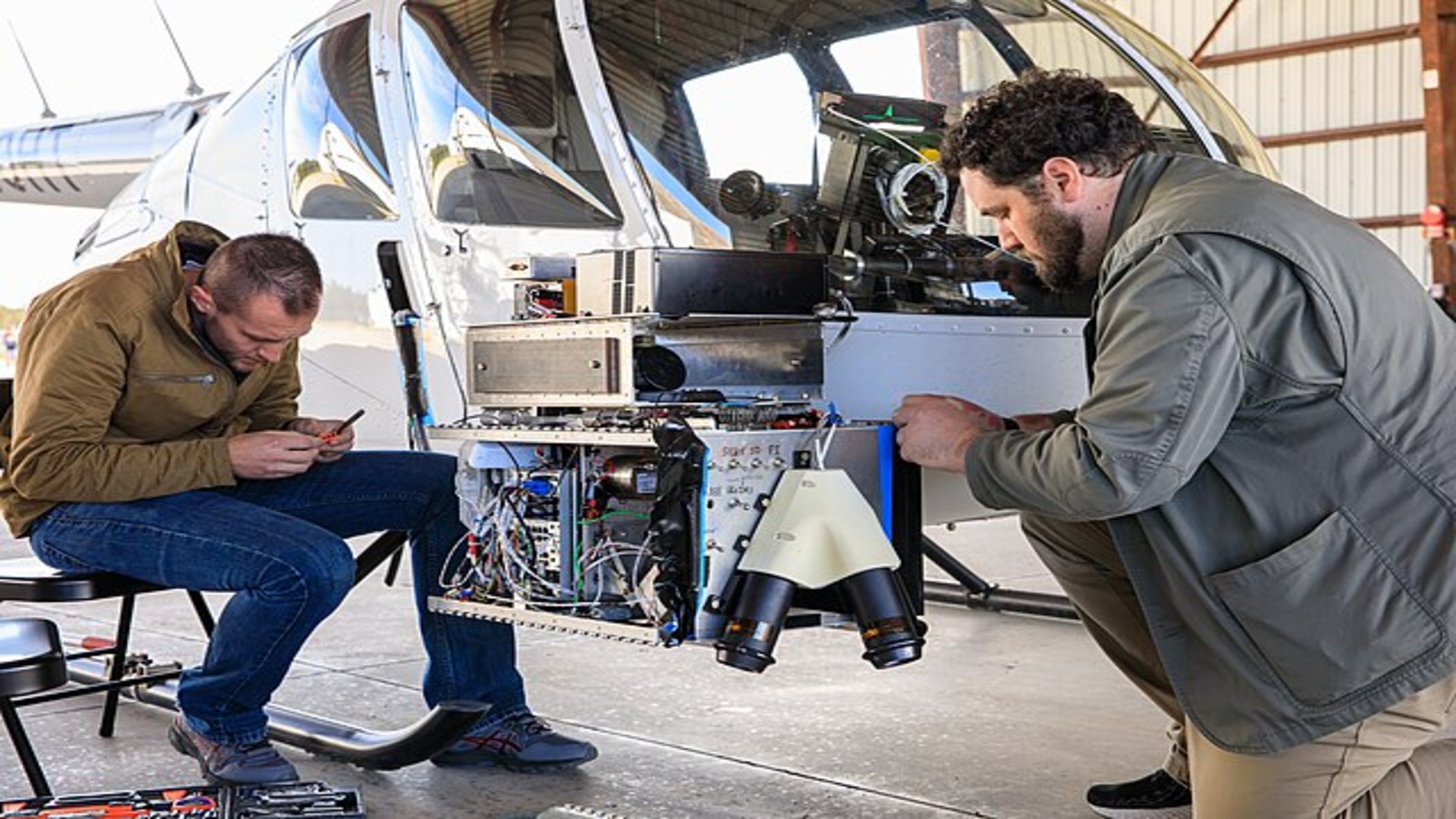Last week, Intuitive Machines became the first-ever commercial company to achieve a soft landing on the moon. Their IM-1 mission is likely the first of many, as the company hopes to establish a delivery service to the moon.
The company currently works closely with NASA to aid their upcoming lunar exploration missions. However, IM believes that its services will start up a lunar economy that will serve more than just NASA.
Intuitive Machines’ pioneer delivery vehicle was the Nova-C lunar lander named “Odysseus”. Odysseus lifted off from the Kennedy Space Center atop a SpaceX Falcon 9 rocket on February 15th to embark on its 6-day journey to the moon.
Odysseus touched down on the moon’s surface at 6:24 p.m. EST on February 21st, although not without a hitch.

Intuitive Machines’ Nova-C Lunar Lander named Odysseus
Image Source: Wikimedia Commons
What was on the lander?
The 1900 kg craft was equipped with an approximate 100 kg worth of payloads. The intent for most of these payloads was to measure different aspects of the environment on the moon. This information would help improve future landing missions. These payloads include:
- Radio Observations of the Lunar Surface Photoelectron Sheath (ROLSES): These measure the electrons that have settled on the moon’s surface. The photoelectron sheath is important to consider when designing things like rovers and space suits.
- Laser Retro-reflector Array (LRA): This reflects light back to its source, which allows future space crafts to navigate to and around Odysseus
- Stereo Cameras for Lunar Plume Surface Studies (SCLPSS): This measures the amount of dust that gets kicked up when the lander touches down on the moon’s surface. It will inform computational models needed to improve future landers
- Radiofrequency mass gauges (RFMG): These measure the amount of propellant left Odysseus’s tanks over time, which tests the tank’s ability to store fuel on the moon
- Navigation Doppler Lidar (NDL): This is for precise measurements of distance and velocity
- Lunar Node 1 (LN1): This is a device to demonstrate real-time positioning on the moon (like GPS on Earth). It will likely expand into a very useful network as moon-op missions begin to expand.
Apart from these government-issued payloads, some commercial payloads were also aboard Odysseus:
- Columbia Sportswear: The omni-heat thermal reflective technology protects the craft from the extreme temperatures.
- Eaglecam Camera: This camera should deploy when Odysseus is 100 feet above the moon’s surface. It is meant to capture the Nova-C lander’s touchdown from a third-person perspective.
- Time Capsule: This will start a repository that will preserve human knowledge safely on the moon

Intuitive Machines engineers preparing to test the Nova-C lunar lander navigation sensors at NASA’s Kennedy Space Center in Florida.
Image Source: Wikimedia Commons
Houston, we have a problem
For a spacecraft to land on the moon, it must from thousands of kph to practically zero. Then it must straighten out and descend to a flat, obstacle-free location near an area of interest. The craft must rely on a variety of cameras, lasers, and sensors to inform its autonomous landing.
During Odysseus’s first orbit around the moon, two lasers that measured the craft’s altitude and speed failed. This rendered the autonomous slow-down and safe landing impossible for the Nova-C lander.
Luckily, one of the payloads aboard Odysseus was NASA’s NDL system. This system had the same capabilities as the failed lasers. Engineers at Intuitive Machine’s command center in Houston bought time by sending Odysseus on an extra 2-hour orbit around the moon. They were thus able to send a workaround protocol to the Nova-C lander to complete its landing near the moon’s south pole.
Nova-C doesn’t quite stick the landing
Although Odysseus’s landing was soft, it wasn’t straight enough. The craft toppled over as soon as it touched down, with many of its antennae pointing away from Earth. Some of the data collection failed as a result of the fall, and much of the data is stuck on the craft, unable to be communicated back down to the command center.
But not all is lost. Odysseus did still send some signal back down to Earth after its landing. This communication continued for seven days before the craft became too cold to operate. This news was good enough Intuitive Machines, which will send their second Nova-C lander to the moon later this year for more data collection testing.
Odysseus will continue to serve as a beacon and landmark for future missions to the moon.
To learn more and see a recording of the live Nova-C lunar landing, visit Intuitive Machines.
If you enjoyed reading our articles, please support us by buying our geeky merchandise on Instagram. Alternatively, you could buy us a coffee or follow us on Facebook, Twitter, Pinterest, or Medium.


